By Jan Bos
The city of Nijmegen, in the southeastern part of Holland and about six miles from the Dutch-German border, is believed to be Holland’s oldest city, going back some 2,000 years. The Romans first established a military camp there, and the area has been permanently occupied ever since. Nijmegen is situated on the south bank of the Waal River, a branch of the Rhine River, flowing northward from Switzerland. Barges carry goods on the Waal River from the harbor at Rotterdam in Holland to the Ruhr industrial area in Germany. Because of its location along a major river trade route, Nijmegen became an important commercial center long ago. And, because of its importance, it was also fought over by various armies during a span of 20 centuries. The 20th century was no different, as its strategic location and the Nijmegen bridge over the Waal made it an ideal objective for armies passing through from east to west and vice versa.
Nijmegen’s strategic importance was recognized first by the Germans and then by the Americans and British. It was brought to worldwide public awareness by Cornelius Ryan’s 1974 book, A Bridge Too Far, and even more so by the 1977 movie of the same name.
The Nijmegen Bridge: Connecting Both Sides of the Waal River
Until 1936 there was no fixed roadway connection with the north bank; vehicle traffic used the ferry between Nijmegen and Lent. The only bridge over the river was a three-span steel railroad bridge, which was opened in 1879.
In 1906, a government committee started to make plans for building a highway bridge across the mighty Waal River at Nijmegen, but World War I intervened and put the construction of the bridge on hold. Although the Netherlands was neutral, all major civic-works projects were cancelled for fear that the war might spill over the border and drag Holland into the conflict. Instead of allocating Dutch guilders for the bridge project, the government used the money instead for building defenses and expanding the Dutch Army.
Soon after the Armistice of 1918, the committee met again and renewed the Nijemegen bridge project. Blueprints for the bridge were drawn and, in 1927, final plans were made. Construction costs were estimated at 2,600,000 Dutch guilders. The Dutch government approved the plans and, on October 23, 1931, construction began. The Nijemegen bridge over the Waal River became the largest single-span bridge in Europe.
It was a magnificent structure. The total length was 604 meters (1,982 feet) resting on four concrete and stone piers, with four lanes for automotive traffic and special paths on each side for pedestrians and bicycles. The highest point of the bow was 65 meters over the roadway. Building the bridge was not without risks. Three workers fell to their deaths and 10 others were injured in several accidents.
At 3:00 pm on June 16, 1936, the bridge was officially opened by Holland’s Queen Wilhelmina as some 200,000 Dutchmen witnessed the ceremony. After the queen had cut the ribbon, hundred of cars, buses, and trucks crossed the bridge. It was a glorious, prideful day for the Dutch (and especially the citizens of Nijmegen), but no one could have guessed that, within eight years, the beautiful bridge would be destroyed, rebuilt, and become one of the bloodiest battlegrounds in history’s most devastating war.
Three years after the bridge’s opening, dark clouds began gathering over Europe and Nijmegen when neighbor Germany began making belligerent noises and threatening war. In September 1939, the threat became real and Germany invaded Poland. The rest of Europe watched, waited, and worried. The Dutch government hoped that Holland could remain neutral, as it had in World War I, but the Germans were already making secret plans to invade France, Denmark, Belgium, and Holland under the code name Fall Gelb (Case Yellow). Hitler’s Foreign Minister Joachim von Ribbentrop had made promises that Holland would remain neutral, but it was a ruse designed to lull the Dutch into inaction.
Nevertheless, the suspicious Dutch government called for a mobilization to strengthen the Army and Air Force. Warplanes were ordered from the Dutch Fokker factories, and extra anti-aircraft guns and howitzers were bought from foreign companies, while defenses were hastily built all over Holland. On the west side of the Maas-Waal Canal, the west bank of the Grave Bridge, and on the north bank of the Waal River, several concrete pillboxes were constructed. The same for the south bank in the Hunnerpark at Nijmegen, and well-equipped Dutch soldiers soon occupied the fortifications.
Dutch engineers installed so-called “road asparagus”–vertical steel pillars–in the roadway at both ends of the Waal River Bridge to impede any invading tanks and other military vehicles. Both the rail and traffic bridges were mined in case they needed to be blown in an emergency. Dutch Army forces at Nijmegen were prepared for whatever came their way. (Get an in-depth look at the rest of the European Theater by subscribing to WWII History magazine.)
War Comes to Nijmegen
It was early on Friday, May 10, 1940, when some 1,000 enemy airplanes flew over Holland in a westerly direction at the start of Germany’s violent Blitzkrieg. Many of them were Junkers Ju-52 transport planes, carrying Fallschirmjäger (paratroopers) and towing gliders packed with infantrymen. The airborne troops’ mission was to capture the main bridges and waterways in western Holland, seize and hold key airfields, and even capture the Dutch royal family in The Hague.
The Dutch Army fought back fiercely and the German Luftwaffe lost many planes that day; some 361 planes of all kinds were shot down or destroyed on the ground. Included in this number were 275 Ju-52 transport planes. It was the largest loss the Luftwaffe would suffer on a single day.
In an instant Holland was at war, and Nijmegen and its two bridges were a main objective of the German Army. Once taken and held, they could be used to shuttle tens of thousands of follow-on troops into Holland, Belgium, and northern France. A reinforced battalion, “Gruppe Nimwegen” of the 254th Infanterie Division, was detailed to capture the bridges, and several Dutch soldiers were killed trying to prevent such an outcome.
Despite all the time, money, and effort that had gone into building them, Dutch engineers mined Nijmegen’s bridges with explosives in order to stop or slow down the enemy. As the enemy drew near, the charges were set off and, with a huge bang, both bridges dropped into the Waal. The effort hardly slowed the Germans, who crossed in assault boats and aboard the ferry that ran between Nijmegen and Lent; the city was soon occupied by Wehrmacht soldiers.
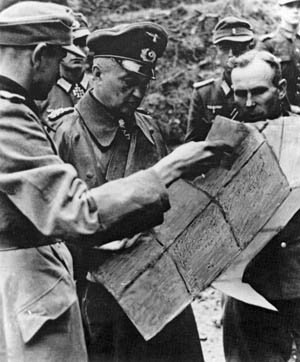
Elsewhere, the country was being overrun. After the Germans bombed the “open city” of Rotterdam, the Dutch commander surrendered. The battle for Holland was over almost as quickly as it had started, and a bitter period of occupation for Nijmegen began that would last for four years. Western Holland would be controlled by the Germans until May 1945.
On orders of the German authorities, Dutch engineers started to repair the bridges at Nijmegen. Pontoons with cranes were used to lift the bow from the river and a three-year reconstruction process began. Finally, in 1943, the rebuilt bridge was opened for traffic––German traffic. During the same time the railroad bridge was also repaired.
As the war went on, Allied bombers flew over Holland day and night on their way to Germany. No bombs were dropped on Nijmegen and/or its bridges, however. But suddenly, on February 22, 1944, a formation of American bombers dropped their load on the city. Was it an error? Did the navigators mistake Nijmegen for a German target? Were the bombs meant for the bridges?
No matter how or why the attack happened, the damage was done. Between 700 and 800 inhabitants of Nijmegen and several German soldiers were killed, with many wounded. The historic old buildings in the center of the city were heavily damaged or destroyed. The bridges, if they had been the target, were not hit.
Mad Tuesday
Four months later, the liberation of Western Europe began. It was D-Day––June 6, 1944. American paratroopers and glider infantrymen of the 82nd and 101st Airborne Divisions landed by parachute and glider in Normandy in advance of amphibious landings on the American Utah and Omaha invasion beaches. Also in the British sector (Gold, Juno, and Sword) British, Canadian, and other Allied amphibious troops came ashore after an early morning assault by British and Canadian airborne and glider forces to capture important targets.
A month after the Normandy invasion, Allied forces conducted a rapid drive across northern France. The airborne divisions were alerted for several missions (Transfigure, Linnet, Linnet II, and Comet) but these operations were cancelled when ground forces overran the intended drop zones. By the end of summer, several bloody but successful battles were fought across France and Belgium, and finally the German Army was retreating in northerly and easterly directions toward the Fatherland. In Holland, the Germans were on the run as well.
It was Dolle Dinsdag (Mad Tuesday)––the Dutch name for Tuesday, September 5, 1944. On this day, rumors were flying across occupied Holland, saying that the long-awaited liberation by Allied forces was at hand. After all, the previous day, the Allies had liberated Antwerp, Belgium, so the liberation of Holland, according to the rumors, must be imminent.
In preparation for this day, the Dutch had made thousands of orange and national flags and were ready to cheer and shower the Allied liberators with flowers as they entered each city. As American and British planes began to fill the sky, and Allied paratroops and gliders descended to earth, it appeared that liberation day had indeed arrived. It was the vanguard of an operation called Market-Garden.
British Field Marshal Bernard Law Montgomery, commanding the British 21st Army Group in the north, had conceived the daring operation in Holland that would bypass the formidable defenses of the Siegfried Line (Westwall) and allow for an attack into Germany’s industrial Ruhr Valley. In order to do so, airborne troops would first have to capture a series of bridges over major waterways in eastern Holland and hold them until relieved by stronger forces coming over land. If the operation were successful, British forces would be in an excellent position the clear the Scheldt Islands in southwest Holland and open the port of Antwerp.
Such a move would also cut off German troops in western Holland. If everything went as planned, Monty believed the Allies could be in Berlin by Christmas 1944 and the war in Europe would at last be over. Montgomery and his staff put the complex plan together in just a couple of weeks and named it Operation Market-Garden.
Photographs of the bridges and planned landing zones were taken by fast, low-flying airplanes, but information from spies in the Dutch underground was ignored. The Dutch said that the 9th and 10th German SS Panzer Divisions were resting and refitting northwest of Arnhem and Oosterbeek––information that Montgomery disregarded. If they were recuperating, Monty thought, that meant that they probably were not combat ready and posed little danger to the operation.
Operation Market-Garden
On Sunday September 17, 1944, Operation Market-Garden began. It was a beautiful, warm, cloudless day. The “Market” portion was the Allies’ first airborne daylight operation of the war and would involve the U.S. 82nd and 101st Airborne Divisions, the British 1st Airborne Division, and Polish 1st Independent Parachute Brigade––over 34,000 men. “Garden” was the follow-on portion that would be conducted by armor and infantry forces from the British XXX Corps, coming up from the Belgian-Dutch border. It would be the largest airborne operation ever mounted up to that point of the war (Operation Varsity, in March 1945, would be larger).
However, there were not enough transport planes to carry all the airborne and glider troops from England to Holland on one day, so plans were made to make one drop in Holland on the 17th, and another on Monday, September 18, 1944. It was also decided not to have two missions on the 17th as there would not be time enough to rest the aircrews and repair the battle damage to the planes. Through such decisions are battles and wars decided.
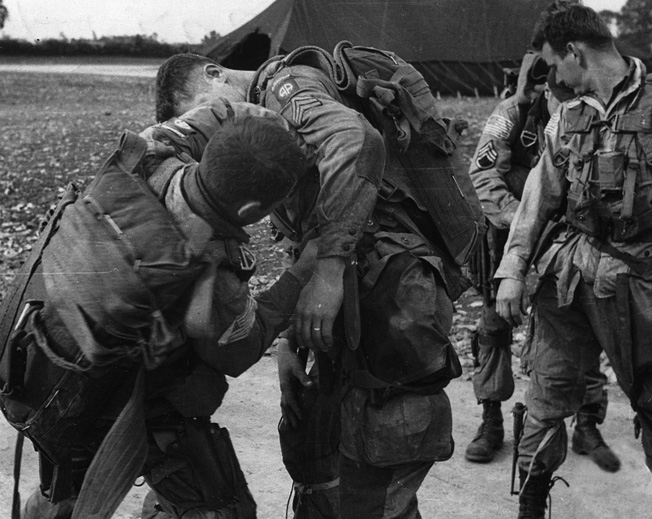
On the morning of the 17th, paratroops and glider troops began climbing into their aerial vehicles and the C-47 “Skytrains” took off from their English bases, heading east. Maxwell Taylor’s 101st Airborne Division was carried by C-47s from the 53rd Troop Carrier Wing toward the drop zones near Eindhoven. James Gavin’s 82nd Airborne was dropped from C-47s belonging to the 50th and 52nd Troop Carrier Groups to DZs around Groesbeek and Overasselt, while the British and Polish units would be dropped on the Hinkelse Heath, northwest of Arnhem, by transport planes from the 38th and 46th Transport Groups, as well as several other Troop Carrier Groups.
The first men in were two “sticks” of Pathfinders, who had landed on fields on the Schoonenburgseweg at Overasselt to mark the drop zone. As soon as the first C-47s carrying the 82nd Airborne Division passed the Dutch coast, German anti-aircraft guns opened fire on the low-flying, unarmed, and unarmored transports but, miraculously, only one was shot down: a C-47A named “Betty” from the 315th Troop Carrier Group, tail number 43-15308, and piloted by Captain Richard Bohannan. On board were 15 paratroopers who were all able to jump from the burning plane. The crew chief was also able to bail out but four others were killed on impact. Except for two paratroopers who escaped, the others were surrounded and, after a firefight, captured by the Germans. Allied fighter planes escorting the aerial convoy dived down and destroyed the anti-aircraft gun that had brought “Betty” down.
Early Successes For the Airborne
The sky continued to rain paratroopers. Men from Colonel Reuben H. Tucker’s 504th Parachute Infantry Regiment, 82nd Airborne, were dropped onto DZ “O” at Overasselt. E Company, 504th, landed on the south bank of the Maas River and captured the large Maas River bridge at Grave in no time, and the villages of Overasselt, Grave, Nederasselt, and Heumen fell into 504th hands with hardly any fighting. The lock bridge over the Maas-Waal Canal was also captured intact. However, German opposition here was much stronger and Tucker’s troops suffered several casualties. The Germans were able to blow the other bridges over the Maas-Waal Canal; at Malden, the bridge exploded practically in the faces of the company sent to capture it. The lock bridge at Heumen, although wired for demolition, was taken before it could be blown up, but the ones at Hatert and Neerbosch were gone before the troopers reached them. South of Nijmegen the paratroopers attacked Bridge #10 (Honinghutje Bridge) across the Maas-Wall Canal. The bridge was badly damaged and was not able to carry the heavy British tanks.
Meanwhile, the paratroopers from the 1st and 3rd Battalions of William Ekman’s 505th PIR, plus the 307th Airborne Engineer Battalion and the 376th Parachute Field Artillery Battalion, descended upon DZ “N,” southwest of Groesbeek. The 2nd Battalion of the 505th and the 508th PIR both landed on DZ “T” on the Wylerbaan, northeast of Groesbeek.
It was a shooting gallery; the northeastern edge of DZ “T” was almost on the Dutch-German border near Wyler, and several planes were shot down over the drop zone. The 2nd Battalion, 505th, was dropped here by mistake, got their bearings, and headed toward Groesbeek to join the rest of the regiment and meet up with the 504th at the Heumen Bridge.
The 505th sent out a strong fighting patrol into the German Reichswald, southeast of Nijmegen, where rumors told of 1,000 panzers hiding in the woods. The rumor was false and Groesbeek was taken without much opposition.
The operation seemed to be progressing nicely now, despite the failure to capture more bridges. Colonel Roy E. Lindquist’s 508th PIR marched to Beek and Ubbergen and secured these villages; the high ground between Nijmegen, Beek, and Groesbeek was also secured by the 508th. Roadblocks were set up and the 376th Parachute Field Artillery Battalion emplaced their 11 75mm pack howitzers and were ready to fire on call (a 12th howitzer was destroyed during the jump due to parachute failure). Gavin’s 82nd Airborne was successful in securing its initial objectives for the operation, and defensive positions were established in the event of a German counterattack. So far so good.
Heavy Resistance at Nijmegen
Nijmegen was a different story. The bridges there were lightly protected, and there were guards on both sides of the bridges, but these men were of inferior quality. As soon as the paratroopers from Colonel Roy Lindquist’s 508th had landed on its Drop Zone “T” at Wylerbaan, 1st Battalion, 508th, marched in the direction of Nijmegen with orders to capture the Waal River bridge there. Lt. Col. Shields Warren, Jr., the battalion commander, directed Companies A and B to link up south of Nijmegen at 7:00 pm; a Dutch civilian would lead the battalion to the bridge. But Company B got lost en route and, after waiting for an hour, Company A, under Captain Jon Adams, pushed on toward the bridge.
Dutch civilians began to greet the paratroopers joyously as they moved into the town, but quickly disappeared when the Germans opened fire. Slowly and carefully the troopers went forward, but came too late into the center of Nijmegen; German troops from the 10th SS “Freundsberg” Panzer Division had just crossed the Waal River bridge before the 508th could get there, set up their defensive perimeter, and send a patrol into town. A deadly firefight broke out and, despite repeated attempts, the 508th, which had earned a Distinguished Unit Citation for its heroic actions during the invasion of Normandy, was unable to get close to the bridge.
Captain Adams was told by a civilian that the control mechanism for blowing the bridge was in the post office a few blocks north of the Keizer Karelplein, so Adams led a patrol that battled its way to the post office. After destroying what they believed was the mechanism, Adams and his men tried returning to their lines, only to find that they were surrounded by the enemy.
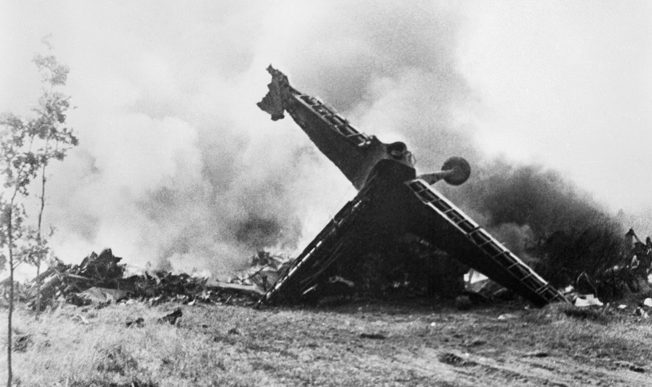
The Germans outgunned and outmanned the lightly armed paratroops. The feared 88s and heavy machine guns were positioned in hastily dug trenches in the Hunnerpark traffic circle on the southern approach, as well as in and around the houses, and a number of homes were burned down by the Germans to create better fields of fire.
Company G approached, only to be met by a torrent of rifle, machine-gun, and anti-aircraft weapons fire. Several paratroopers were killed by a machine gun on the Keizer Karelplein, their bodies left sprawled and bleeding on the pavement. A number of other paratroopers were wounded and were taken to a makeshift first-aid station set up in the houses on the Groesbeekseweg, close to the traffic circle. Company G was stopped only some 400 yards from the bridge; it could advance no farther.
Taking Back the Drop Zone
The Germans started to reinforce their positions with regular infantry troops and Luftwaffe personnel. Unable to advance due to fierce German opposition, the 508th PIR received a message from General Gavin to “withdraw from close proximity to the bridge and reorganize.”
Frustrated, the 508th could do nothing but pull out of Nijmegen, leaving the town in German hands. To make matters worse, the British airborne troops, battling for their lives in Arnhem, a mere 11 miles due north, were still cut off and no relief columns could reach them as long as Nijmegen remained under enemy control.
The 508th fell back to DZ “T,” but by then Germans troops had overrun the American position and had taken over the drop zone; some 450 CG4A Waco gliders, carrying Gavin’s artillery battalions, supplies, and vehicles were scheduled to arrive at this landing zone the next day.
Fortunately, Lindquist’s 508th, thanks to the arrival of the companies that had pulled back from Nijmegen, managed to recapture the fields on the 18th––and just in time, otherwise casualties would have been devastating. Despite heavy fire from small arms and 16 20mm flak guns, Warren’s battalion formed up and charged the enemy positions just as the first gliders started to land. One of the heroes of that day was 1st Sergeant Leonard A. Funk, Jr., who led elements of Company C in a fierce counterattack that cleared LZ “T” of German infantry and anti-aircraft artillery, and allowed the landing of reinforcing glider-borne troops and artillery of the 319th, 320th, and 456th FA Battalions. For his actions, Sergeant Funk received the Distinguished Service Cross. A total of 50 Germans were killed in the battle for the DZ, another 149 captured, and all the 20mm guns were destroyed.
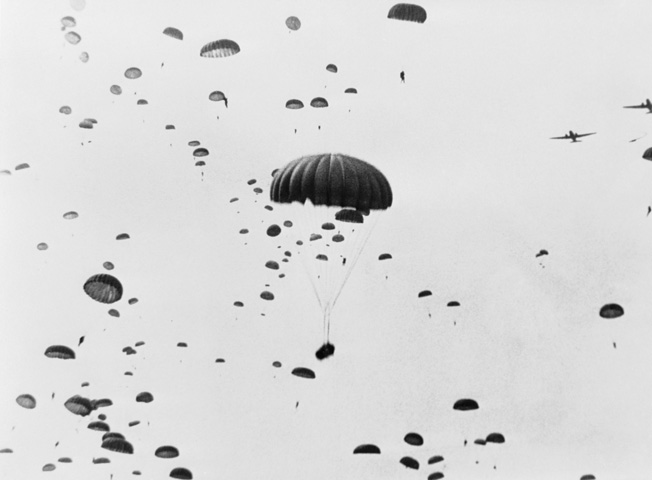
The 508th also seized, occupied, and defended the Berg-en-Dahl hill mass, which controlled the Groesbeek-Nijmegen area. The regiment cut Highway K, an act that prevented the enemy from bringing in reserves––or escaping destruction.
That afternoon, General Browning, fearing that the British XXX Corps in Arnhem could not hold out much longer, requested that Gavin try again to take the Nijmegen bridge. The Americans drew up a plan to seize the bridge in a night assault. Before the attack could be launched, however, Browning changed his mind and called it off, preferring that the 82nd hold the high ground south of Nijmegen for the time being.
Meanwhile, confusing and contradictory reports from Dutch civilians about the composition, size, and location of German units in and around Nijmegen and the Reichswald continued to filter in to Gavin’s headquarters, to the point that no one really knew what or who they were facing.
Van hoof and the Heroic Dutch Resistance
The Dutch resistance fighters and ordinary citizens bravely did everything in their power to assist the Allies. Tom Horne of Company H, 508th PIR, remembered that he and other members of his company were digging foxholes near a church in Nijmegen when a priest and a tall young boy of about 15 in a Boy Scout uniform approached. Horne said, “The priest motioned for me to get out of the hole and give my entrenching tool to the young man. I did so and the boy dug a big, wide, deep hole for me. As I went to get into the hole, the priest motioned for me to wait and he sent the boy off on an errand. A few minutes later the boy came back with a small mattress which he put in the hole for me. By this time it was very late in the evening. After I was in the hole for a while, the priest came back pushing a wheelbarrow with a large pot in it. He came around to each trooper’s hole and served hot beef stew. These people were showing their gratitude by serving us this hot food.”
One of the Dutch resistance fighters was 22-year-old Jan van Hoof. On the night of September 18, he crept beneath the highway bridge’s structure and with his knife cut the cables that were connected to the explosives on the bridge. By cutting the cables, van Hoof saved the bridge from destruction. He then went back and guided the Americans through the maze of city streets, avoiding the German positions. He would soon pay for his heroics with his life.
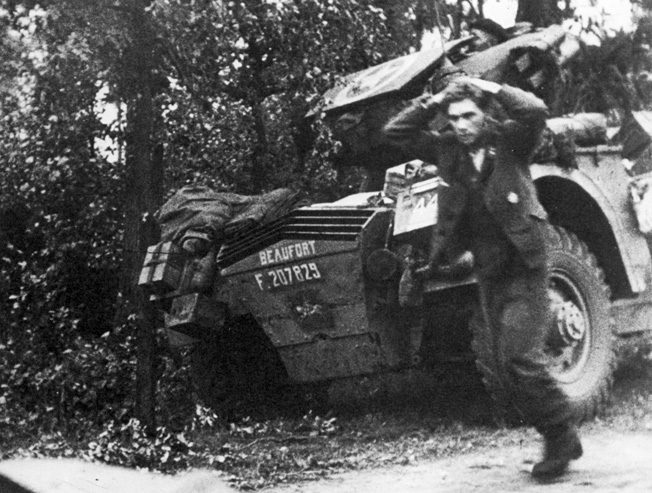
Led by van Hoof sitting on a Humber, a British scout car, American tanks and halftracks were creeping through the streets with paratroopers riding the tanks; soon the Shermans and armored cars came under fire from the feared 88s. The Humber raced toward the railroad bridge. In the scout car were an American paratrooper and the two-man British crew. A German antitank gun destroyed the car, wounding van Hoof and killing the others. Several Germans approached the smoldering Humber and, seeing van Hoof still alive, shot him in the head.
During a lull in the fighting, the four men were buried by Dutch civilians in the garden of a house at the corner of Lange Hezelstraat-Kronenburgersingel Nijmegen––about 60 yards from the railroad bridge. (After the war, a statue honoring Jan van Hoof was erected on the traffic circle next to the Hunnerpark. An official investigation into van Hoof’s role in saving the bridge was held. Both Dutch and American reports give Jan credit for his part in the capture of the bridge, although there were several doubters. By Royal Decree, Jan was posthumously awarded the Militaire Willemsorde, fourth class, the highest Dutch military award.)
Preparing to Cross the Waal River
On the morning of Tuesday, September 19, 1944, the first reconnaissance vehicles from the Household Cavalry arrived in the 82nd’s perimeter at Nijmegen, soon to be followed by Sherman tanks, Bren carriers, half-tracks, and other armored vehicles. Because XXX Corps had to fight a series of ambushes and running gun battles along “Hell’s Highway,” as Route 69, the narrow road between Eindhoven and Arnhem, came to be called, and experienced a long delay at Son caused by a bridge demolition–they were more than 30 hours behind schedule.
General Gavin and General Brian Horrocks, commanding the British ground column, met in Malden to discuss plans for getting across the Waal River as soon as possible. Gavin said he intended to send Lt. Col. Ben Vandervoort’s 2nd Battalion, 505th PIR, against the south end of the bridge while sending Tucker’s 504th PIR across in boats the next day to capture the north end. The only problem was, Gavin had no boats. Fortunately, the British had collapsible wood-and-canvas boats in their engineer train many miles back and offered them to Gavin.
The British lorries carrying these boats were sent to Nijmegen with top priority. It was expected that they would arrive during the night of September 19/20, but the boats did not arrive in the 82nd’s sector in time and the crossing had to be postponed. In addition, 2nd Platoon, B Company, 307th Airborne Engineer Battalion, under command of Lieutenant Adrian J. Finlayson, was ordered to collect any boats he could find on the Maas-Waal Canal. In several “sweeps,” the platoon gathered some 27 rowboats of all kinds, but they were never used during the Waal River crossing.
While waiting for the British boats, Gavin ordered Vandervoort’s men, supported by British armor, to attack the south end of the bridge. Repeated attempts resulted in repeated failures and mounting casualties. Intelligence reports estimated that some 500 SS men, backed by artillery, mortars, and anti-aircraft guns, controlled the highway bridge and the accesses toward it.
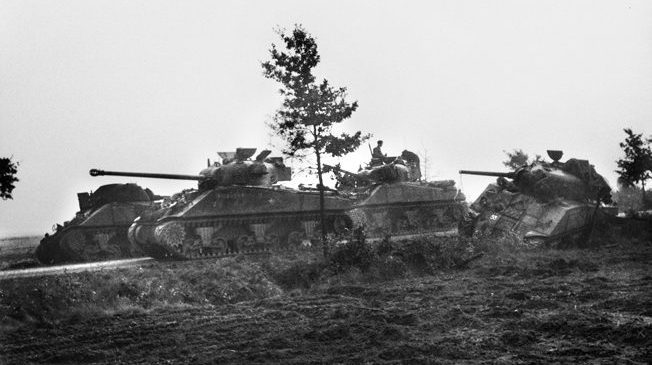
Reinforcements were needed. The weather in Holland was good. The weather in England, however, was bad, with low-hanging clouds and fog preventing the 325th Glider Infantry Regiment from taking off and reinforcing the 82nd. (The 325th would not arrive in Holland until September 23.) The Germans had no trouble reinforcing their positions, however, and soon the Reichswald was bulging with troops, armor, and artillery.
On the morning of September 20, 1944, General Gavin climbed into his jeep and drove off toward the power station when his jeep was suddenly fired upon by German soldiers. The driver quickly turned the jeep around, while General Gavin fired back with his M-1. The jeep raced back to the 504th positions in the Jonkerbosch area in southern Nijmegen. Exasperated with the delays (the British boats still hadn’t arrived) and the stubborn German resistance, Gavin ordered Tucker to clear the area of enemy troops in preparation for the river crossing. H-hour was set for 3:00 pm.
The paratroopers of Major Julian Cook’s 3rd Battalion, 504th, set off, escorted by British Sherman tanks from the Irish Guards that would provide cover for the crossing. The tanks of the 2nd and 3rd Squadrons took up positions behind a dike near the power plant and started to lay down a smoke screen; British artillery positioned in Malden would fire their 25-pounders to support the crossing. Eight British Typhoon fighters from 247 Squadron, 83 Group (2nd Tactical Air Force, RAF) flew over and strafed the north bank. The wind blew away the smoke screen.
The First Wave: Buriss’s Charge
Finally, at approximately 2:30 pm, the trucks carrying the boats arrived and were unloaded near the power station. The 307th Engineers from C Company, who were to pilot the boats across the river, were stunned. They had never seen boats like these, let alone rowed anything like them. The boats––26 in all––were folding boats, 19 feet long, with plywood bottoms, canvas sides, and wooden struts to hold up the sides. There were hardly any oars, and there was no time to train in using them.
The Germans noticed the activity around the power station and started to rake the area with artillery fire. While under intense fire, the boats were carried over the dike and lowered into the river, but some of the boats––and men––got stuck in the mud. In spite of exploding shells, whizzing bullets, and flying shrapnel, the paratroopers had to get out of their boats and carry them farther into the river, which was approximately 460 feet wide at this point, with a swift current. The men had to paddle using their rifle butts as oars, ducking between strokes as the air was filled with small arms fire, heavy machine-gun fire, mortar, Nebelwerfer, and artillery fire.
The crossing was made in several waves. Each boat carried 13 paratroopers and a crew of three engineers. The first wave was launched at 2:57 pm and consisted of troopers from 3rd Battalion, 504th: Staff, H Company (Captain Carl W. Kappel), I Company (Captain T. Moffatt Burriss), and forward observer teams from the 376th Parachute Field Artillery Battalion whose guns were positioned on the west bank of the Maas-Waal Canal. Due to their heavy equipment, several 376th observers had to stand up, exposed, in the boats.
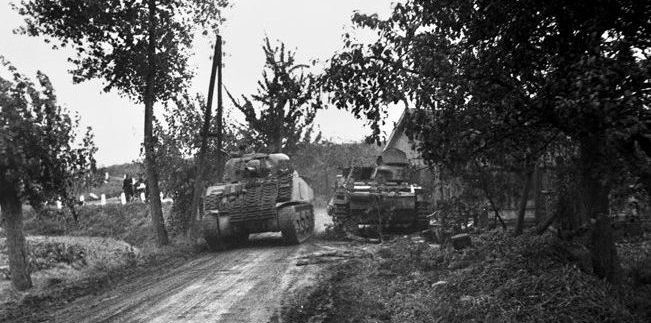
The men rowed as fast as they could but they couldn’t out-row the sheets of deadly metal being flung at them. Men were wounded or killed, and boats were blown out of the water. The canvas sides offered no protection for the frantic men, and the punctured boats began to fill with water. Helmets were used for bailing and handkerchiefs were stuffed into bullet holes. Some of the men exited their sinking boats and swam the remainder of the way.
Exhausted, the survivors of Burriss’s I Company reached the north bank, jumped out of the boats, took cover, and tried to catch their breath and gather their courage before pushing on. The men had to run across a 1,200-foot-wide field to reach the 20-foot-high dike. About halfway across the field was a shallow ditch, which gave some protection.
Ordering his men to fix bayonets, Burriss charged up the dike, showing no mercy. I Company threw hand grenades into the German positions and shot every German
who came in sight. No prisoners were taken at first. The men then moved through the fields, some heading for the railroad bridge and others toward Hof van Holland, an old Dutch fortress with a moat around it and German machine guns and anti-aircraft guns in its towers.
Captain Harris and the Second Wave
While Burriss’s men were battling their way northward, the second wave was preparing to cross. Only 11 boats were available for the second wave, the others having been destroyed or abandoned on the north bank when there were not enough engineers to return them. The remaining engineers rowed these 11 boats back to the Nijmegen side to pick up more paratroopers.
The 2nd wave started across at 3:15 pm with troopers from G Company (Captain Fred E. Thomas), 3rd Battalion, and 1st Battalion, 504th (Captain W.S. Burkholder). One boat consisted only of engineers under command of 1st Lieutenant John A. Holabird, Jr., whose task was to fulfill the engineer role: remove/lay mines, remove explosives and obstacles, etc., on the far side of the Waal.
American and British artillery and tank fire covered the crossing. Second Battalion, 504th, also tried to suppress the enemy with rifle and heavy machine-gun and mortar fire.
Although the boats continued to be hit by deadly fire, the diminishing number of engineers from C Company, 307th, never faltered, rowing time and again back and forth to pick up and deliver the remainder of Major Willard E. Harrison’s 1st Battalion, 504th. Wounded paratroopers were returned to the south bank and received medical attention at an aid station set up in the power plant. With only nine boats still available, the sixth and final crossing took place at 7:00 pm.
One of those who risked his life to ferry the paratroopers across the Waal was Captain Wesley D. Harris, commander of Company C, 307th Airborne Engineer Battalion. For his heroism, he was awarded the Distinguished Service Cross. The citation for the medal reads, in part: “Captain Harris, while under heavy enemy fire, personally directed the loading and movement of assault boats which enabled the 504th Parachute Infantry to successfully cross the Waal River and establish the vital Nijmegen bridgehead.
“Crossing the river in the face of heavy enemy machine gun, 20-mm, and artillery fire in one of the first assault boats of the initial assault wave, Captain Harris was painfully wounded in the back and arm but continued to supervise the movement and unloading of the boats. After returning to the south bank of the river he refused medical evacuation but effected rapid and thorough reorganization of the remaining boats and engineer personnel for the crossing of the second wave. While leading the second wave, a pontoon near his boat was hit by enemy fire and capsized, but Captain Harris plunged into the river and, despite his wounded condition, assisted three men to other boats. Captain Harris then returned to the south bank and while supervising loading of the third wave, fainted for the loss of blood.”
The greater part of 3rd Battalion, 504th, on the north side of the river, bypassed the fortress and set their sights on the railroad bridge. Two pillboxes near the railroad tracks were destroyed, and the north end of the railroad bridge was captured and secured.
A German counterattack, supported by 20mm self-propelled guns, was beaten back by the paratroopers. Several prisoners were taken and locked inside a chamber of the railroad bridge, while the fortress was captured by a platoon from H Company.
Jack Dube’s Shrapnel Wounds
Meanwhile, small groups from both H and I Companies were attacking the north end of the railroad bridge and spraying Browning Automatic Rifle fire while awaiting reinforcements. Elements from these two companies were also fighting their way toward the north end of the still-intact highway bridge.
Lieutenant Jack Dube, Company G, 508th PIR, had crept to within a few blocks of the bridge when his unit was stopped by heavy machine-gun and 88mm fire and fought back with a bazooka, 60mm mortar, and rifles. “We were soon pinned down and fragmented as an effective combat unit,” he said. “I was kneeling behind shrubs in the yard of a structure I thought was a dental or medical office building. Several shell bursts near my location restricted my movement.
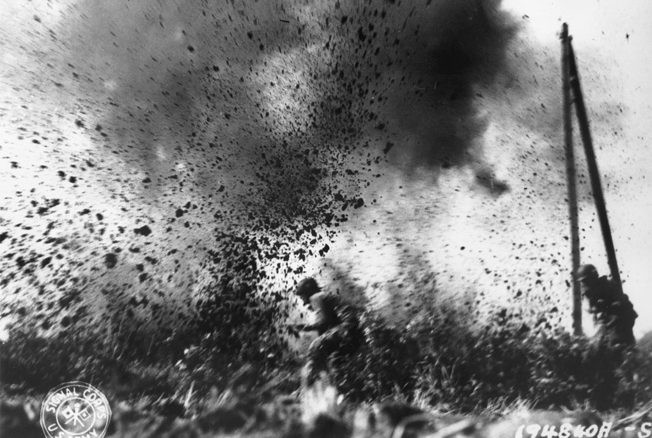
“A shell hit the building behind me and shrapnel from that explosion hit me in the back of the head, left shoulder, and left forearm. The shrapnel had penetrated through my helmet and helmet liner, leaving a jagged three-inch hole. A medic applied sulfa powder to my gaping and profusely bleeding head wound. Continued enemy shelling completely dispersed our small group, and I soon found myself alone with no weapon, and much confusion due to my injury. Weakness, dizziness, and disorientation convinced me to seek cover and medical assistance.”
Dube was taken to a hospital, which he said was soon was hit by incendiaries and set on fire. He was then evacuated by members of the Dutch underground and carried to the basement of a private home where he remained for three or four days before being taken to a U.S. Army field hospital near Nijmegen.
Rolling Across the Bridge
At the south end of the span in Nijmegen, Vandervoort’s battalion, reinforced by British tanks and infantrymen, was closing in on the structure. Several tanks were knocked out but paratroopers fought their way from house to house, from rooftop to rooftop, battling their way toward the highway bridge.
The SS troops in the park started to run for the bridge, leaving behind their dead and wounded. (In a later stage of the operation, the Germans were buried in mass graves in several Nijmegen cemeteries; some 123 dead Germans were buried in a special plot of the temporary American Molenhoek cemetery, south of Nijmegen.)
German resistance finally was overcome at the south/Nijmegen end of the bridge. Now, with both ends in Allied hands, Major Cook requested tanks. He sent a message that read, “Cook has the dike and the guns. Can you run a tank down the bridge to help them out?”
Four Shermans from the Guards Armoured Division, under command of Sergeant Peter Robinson, obliged. When the signal was given, the tanks raced across the bridge, blasting away with their machine guns and 75mm main guns. They managed to destroy an 88mm antitank gun north of the bridge; another 88 fired on one of the tanks, disabling it. When the tanks were midway across the bridge, the Germans tried to blow the structure. Nothing happened (perhaps thanks to Jan van Hoof’s heroic activity?), and the tanks reached the paratroopers in Lent. There were still a few Germans on the bridge, but their resistance was soon overcome and the bridge was declared secure at 7:10 pm on September 20.
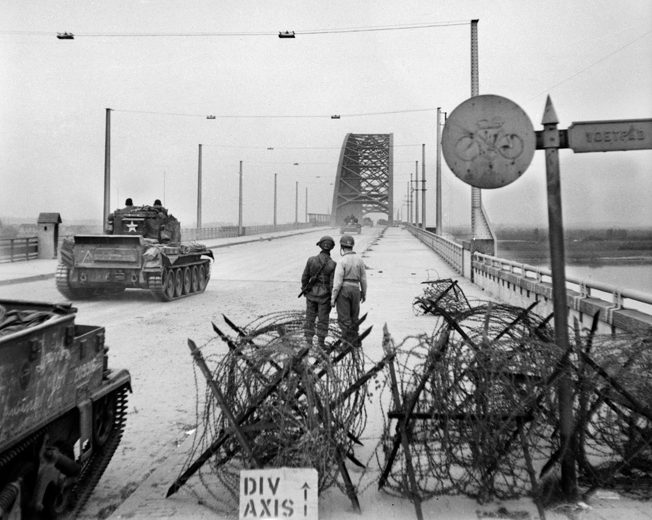
The price for the bridge was high; the 504th lost 24 men killed and some 70 seriously wounded in the river crossing and the attack on both bridges. In the battle for the railroad bridge, a total of 267 dead Germans were counted and a little more than 200 Germans were captured. Much of the city of Nijmegen was destroyed during the five days of fighting.
Gavin later wrote, “The [Dutch] underground played a major part in getting this done and they deserve a lion’s share of the credit for saving the big bridge at Nijmegen.” But the fighting was far from over.
An area of about a mile north of the bridge was cleared by the paratroopers, but the tankers refused to go on toward Arnhem to relieve the beleaguered British and Polish airborne troops; Dutch intelligence had sent a message with information that three Tiger tanks, several antitank guns, and supporting German infantry were on their way to Lent. The paratroopers and British tankers at Lent dug in for the night. During the night, the last wounded were evacuated from the north bank and taken to field hospitals in Nijmegen.
Fighting at Mook and Beek
At the time of the river crossing, paratroopers of the other battalions of the 505th had a hard fight at Mook. General Gavin left the power station at Nijmegen, mounted his jeep, and raced to Mook, where he personally took command of the 505th’s defense.
At Beek, about two miles southeast of Nijmegen, paratroopers from the 508th and D Company, 307th Engineers, succeeded in stopping several German attempts to take back the Waal River bridge. Heavy fighting took place in Wyler and Beek, the latter village changing hands several times.
Harry Roll, Company H, 508th PIR,was one of those fighting in Beek. Launching a night assault from Berg-en-Dahl, Company H was raked by machine-gun fire coming from the cupola of a house. “I dove for a ditch,” said Roll, “and snuggled as low as I could. I took a shoulder hit that only skinned and burned, but to my surprise, Captain Toth, our CO, stood just above me in the middle of the road and called for Moon and Tucker to get that bazooka up front. Toth told them to hit the shutters on the cupola. A direct hit silenced that machine gun, allowing us to proceed down through the streets into Beek.”
After the order to pull back was given, Roll went over to the foxhole of a buddy, Cecil Bledsoe, to give him the word, only to find Bledsoe shot through the head. “The sniper fire of the German was well placed despite the darkness,” Roll said.
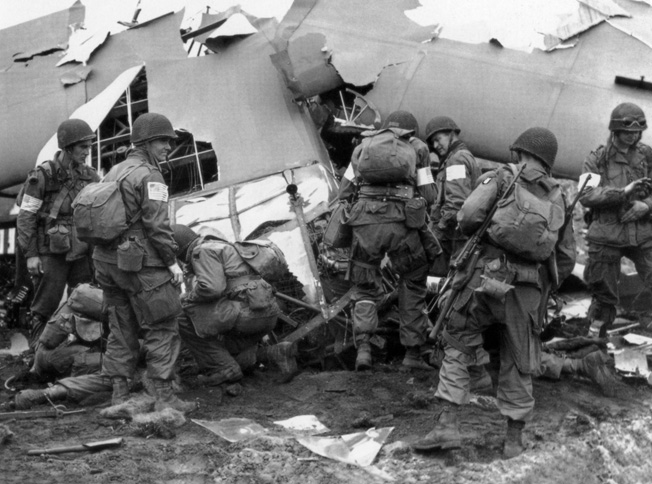
Tom Horne, Company H, said that his company was involved in a “heated skirmish” with the Germans in the streets of Beek. “They were throwing grenades and firing from everywhere. I was in a kneeling position firing my rifle at them when I got hit and knocked flat on my back. Harry Roll was behind me and he said I was hit in the mid-section because blood was coming out of my back. A few moments later I figured out that I was hit in the base of my neck. I’m pretty sure I was hit by a burst from a machine gun because the woodwork on my rifle was also busted up. This ended my tour in the Holland campaign. Hospital life was more to my liking.”
Sergeant Ralph Busson was another Company H paratrooper at Beek. He remembered that it was so dark during the night attack, “we had to hold onto each other. All hell broke loose as we got into the center of town. After about 20 minutes of fighting, things quieted down. We pulled back out of town to the hill above it. The next morning we found out that the Germans were still there, so we called for an artillery barrage. H Company was to attack and take the town.
“As we were going down a small alley with eight men, a German machine gun opened up; the gunner got five out of the eight. Frank Shimko, R.J. Brown, and I managed to duck into a small building. About 100 yards down the street, I saw a German sticking his head out of a window. It took me one shot to get him. Throwing all of our grenades down the street, we must have gotten their machine gun, too, because it stopped firing. Then we got orders to withdraw. The next day H Company took the town without firing a shot.”
Another Company H trooper, Ollie W. Griffin, recalled the loss of two buddies at Beek. When the company returned to the town on September 20 after pulling out the night before, they jumped into the same slit trenches they had dug on the 19th; the Germans were waiting for them. “There must have been several snipers looking right down on us,” Griffin said. “Sergeant Curtis Sides was in a hole about 10 feet from mine. Bill Kurzawski was in another one about ten feet in front of Sides. The first shot hit Kurzawski in the head, killing him. The next shot hit Sides’ rifle, ruining it.
“He turned to me and said he couldn’t use his rifle. I said to get down but I should have said ‘Let’s move.’ Almost immediately the next shot hit Sides in the head and killed him.”
Griffin got out of the killing zone as fast as he could with bullets following him, and ended up in a small woods. A few minutes later he was joined by Frank Bagdonas. “We found a place a little up the hill with a good view of Beek,” Griffin said. “We were observing the closest house when out the door walked a tall German soldier. He acted like no one was within a hundred miles; I guess he thought we all took off for Berg-en-Dahl. Frank and I decided to aim, count to three, and both shoot. We did and he went down.”
John Towle’s Medal of Honor
During the fierce fighting for Wyler and Beek, the 508th captured 483 prisoners, but the regiment suffered heavily: 139 killed, 479 wounded, and 178 missing. On the morning of September 21, German tanks approached the American lines in the western part of the Waal bridgehead. Bazooka gunner Private John Towle, C Company, 504th, managed to disable the panzers on the Oosterhoutsedijk. The remaining tanks were pulled back and the German attack was stopped, but Towle was wounded by shrapnel from enemy mortar fire and died on the spot. He was posthumously awarded the Medal of Honor.
His citation reads, “The rifle company in which Private Towle served as rocket launcher gunner was occupying a defensive position in the west sector of the recently established Nijmegen bridgehead when a strong enemy force of approximately 100 infantry, supported by two tanks and a half-track, formed for a counterattack.
“With full knowledge of the disastrous consequences resulting not only to his company but to the entire bridgehead by an enemy breakthrough, Private Towle immediately and without orders left his foxhole and moved 200 yards in the face of intense small-arms fire to a position on an exposed dike roadbed.
“From this precarious position Private Towle fired his rocket launcher at and hit both tanks to his immediate front. Armored skirting on both tanks prevented penetration by the projectiles, but both vehicles withdrew, slightly damaged. Still under intense fire and fully exposed to the enemy, Private Towle then engaged a nearby house which nine Germans had entered and were using as a strongpoint and with one round killed all nine.
“Hurriedly replenishing his supply of ammunition, Private Towle, motivated only by his high conception of duty which called for the destruction of the enemy at any cost, then rushed approximately 125 yards through grazing enemy fire to an exposed position from which he could engage the enemy half-track with his rocket launcher.
“While in a kneeling position preparatory to firing on the enemy vehicle, Private Towle was mortally wounded by a mortar shell. By his heroic tenacity, at the price of his life, Private Towle saved the lives of many of his comrades and was directly instrumental in breaking up the enemy counterattack.”
Of such men was Tucker’s regiment made. His battered 504th PIR was relieved by the British 43rd Infantry Division on the 21st and marched back across the bridge toward Nijmegen. There they boarded DUWKS and were taken to positions halfway between Nijmegen and Groesbeek to briefly rest and recuperate.
The High Cost of Operation Market-Garden
Some men of the 504th had been unhappy that the regiment had been left out of the Operation Overlord fighting in Normandy; the battle for Nijmegen more than made up for it.
Although the fight for Nijmegen and the effort to capture the bridges intact was successfully concluded, the same cannot be said for the rest of Operation Market-Garden. Allied forces were never able to reach the elements of the British 1st Airborne Division surrounded in Arnhem, and so the entire operation stalled. Eighty-one British paras died trying to take the city and its vital bridge, and hundreds more were captured.
The toll for Market-Garden was high. From September 17 to the 25th, the British Airborne Corps lost 7,212 men killed, wounded, and missing. The 82nd lost a total of 1,432 and the 101st Airborne had 2,110 casualties. The 1st Polish Parachute Brigade, which took part in the battle of Driel, lost 378. Among the aerial forces, 122 American glider pilots were killed, wounded, or missing, while the American and British air transports lost 596 crewmen and 144 planes. British XXX Corps lost 1,420 men, as well as 70 tanks.
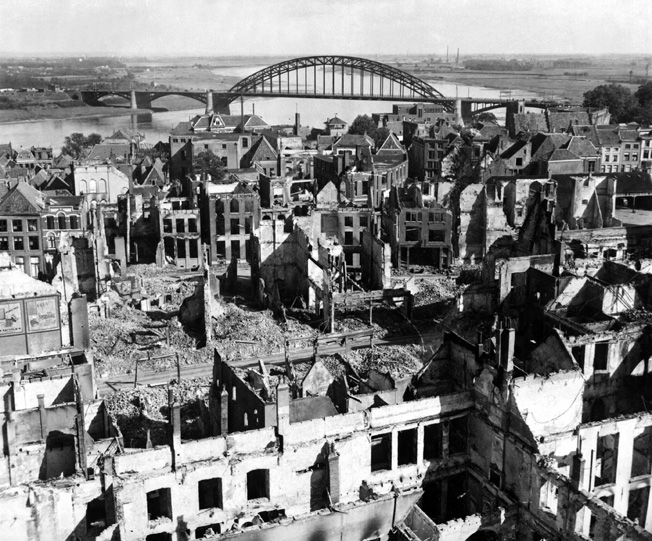
In the end, it was Field Marshal Montgomery on whose shoulders must rest the responsibility for the conception—and ultimate failure––of Market-Garden. The failure of the operation, which Monty blamed on bad weather, not only caused the loss of so many brave troops but delayed the Allies’ major thrust into Germany that Market-Garden was supposed to have facilitated and thus pro- longed the war.
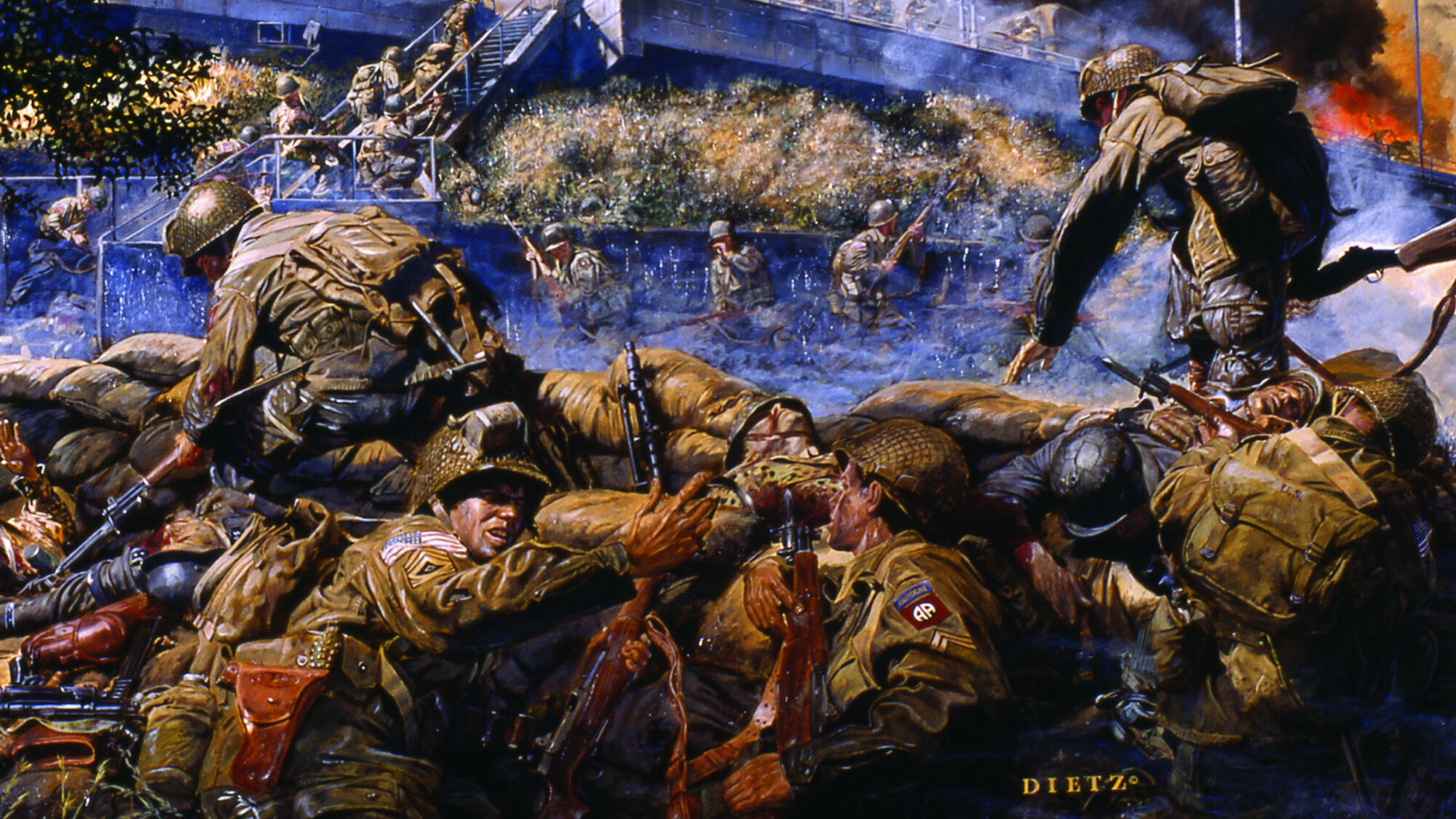
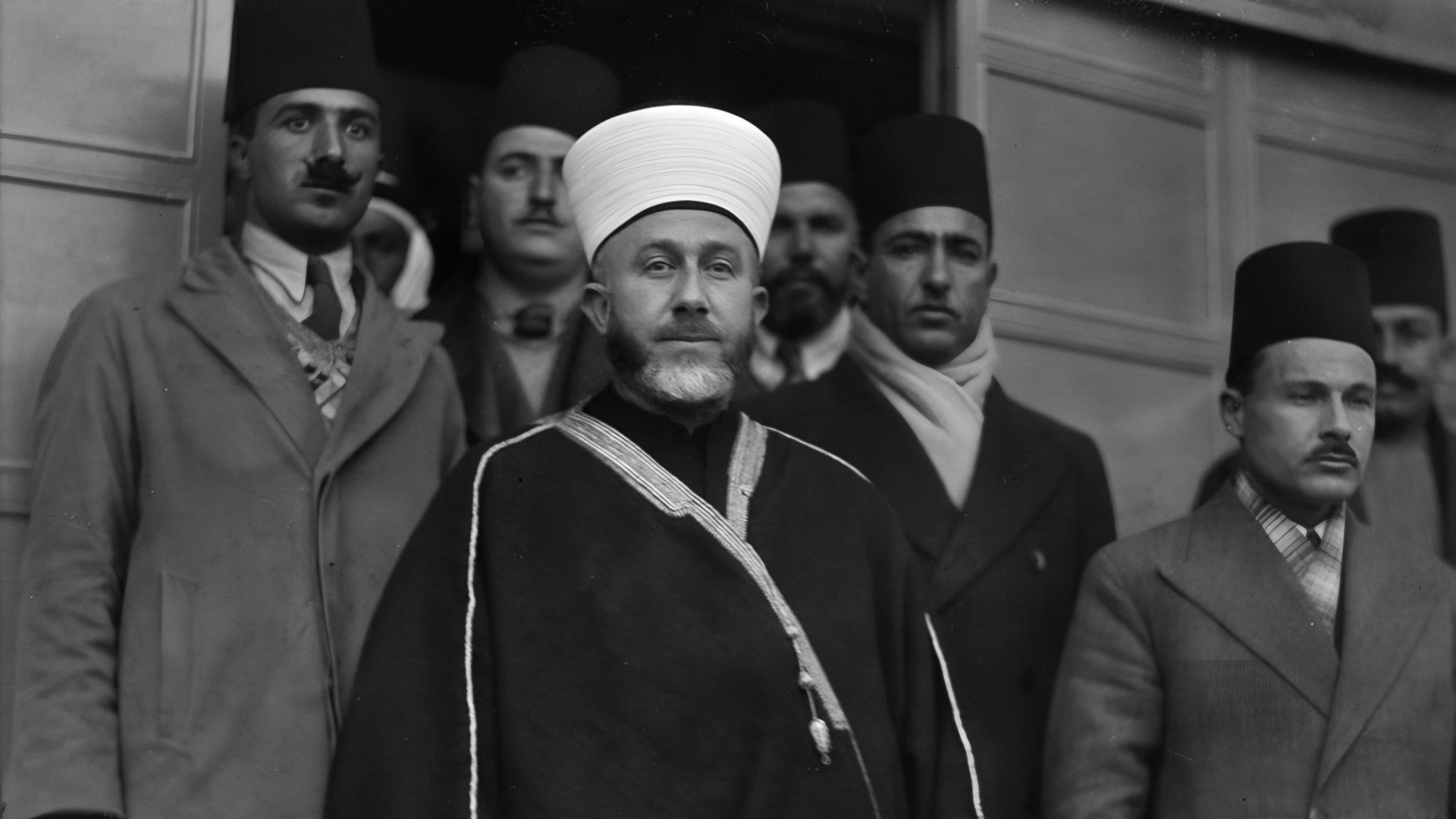
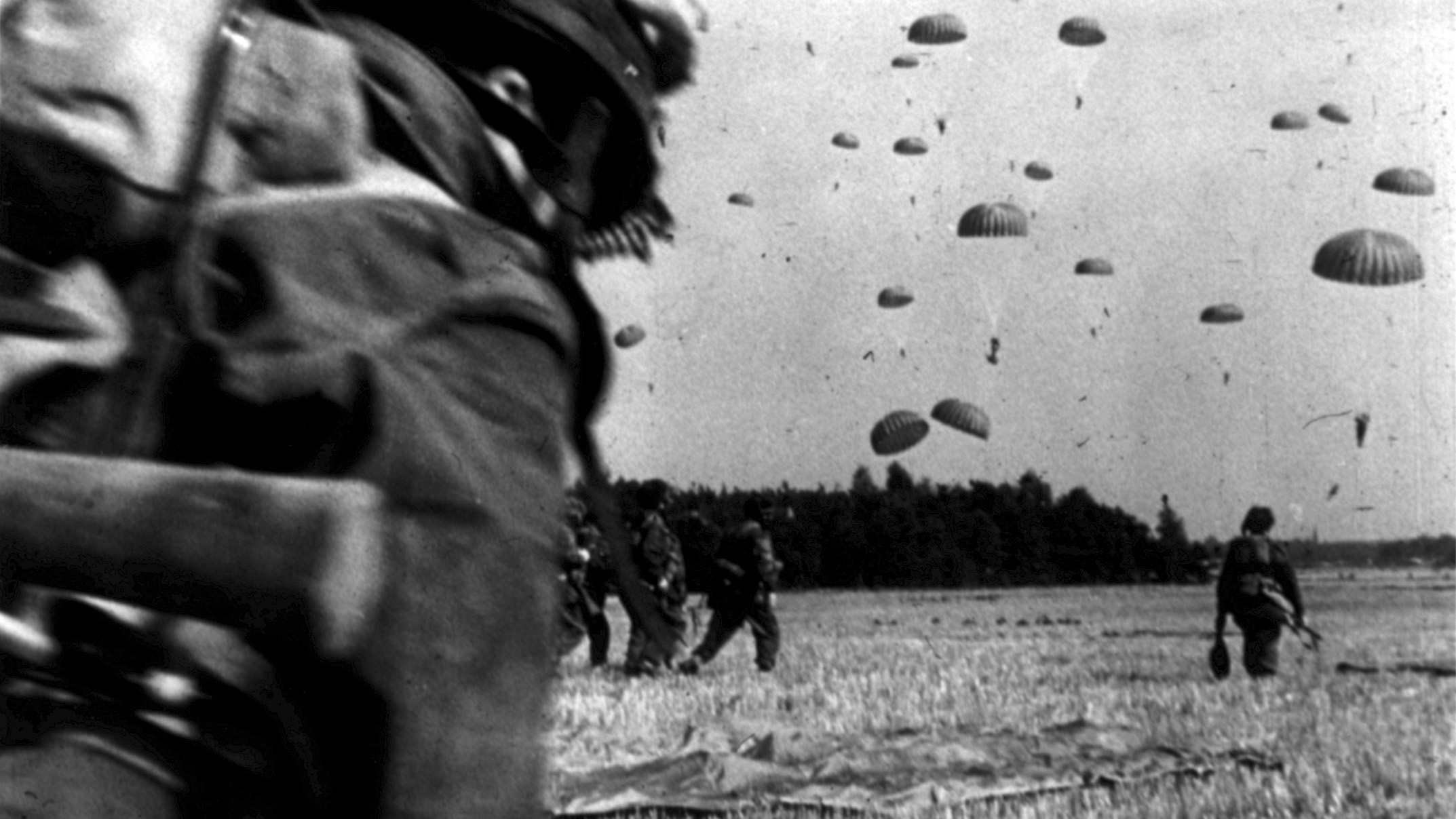
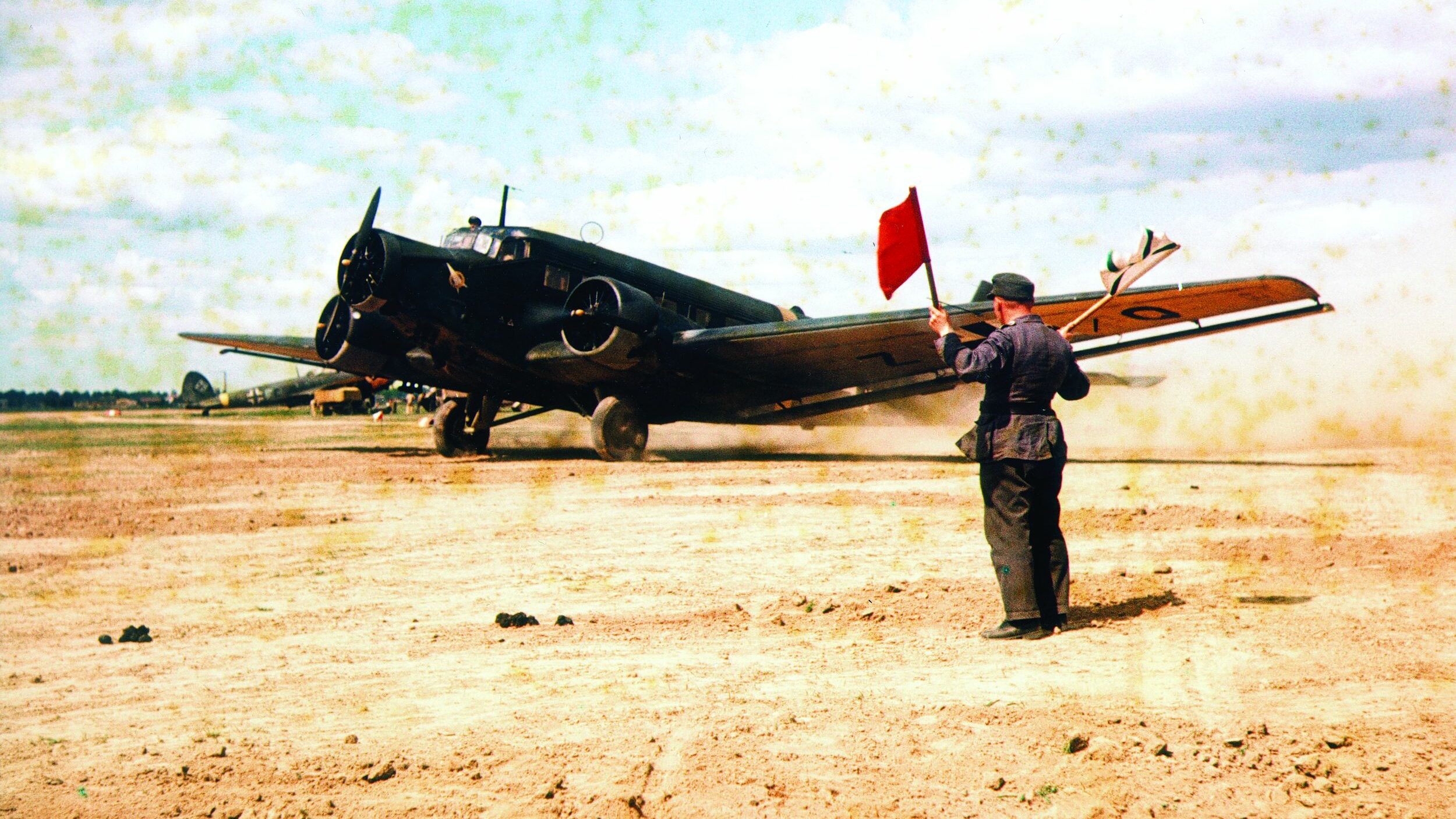

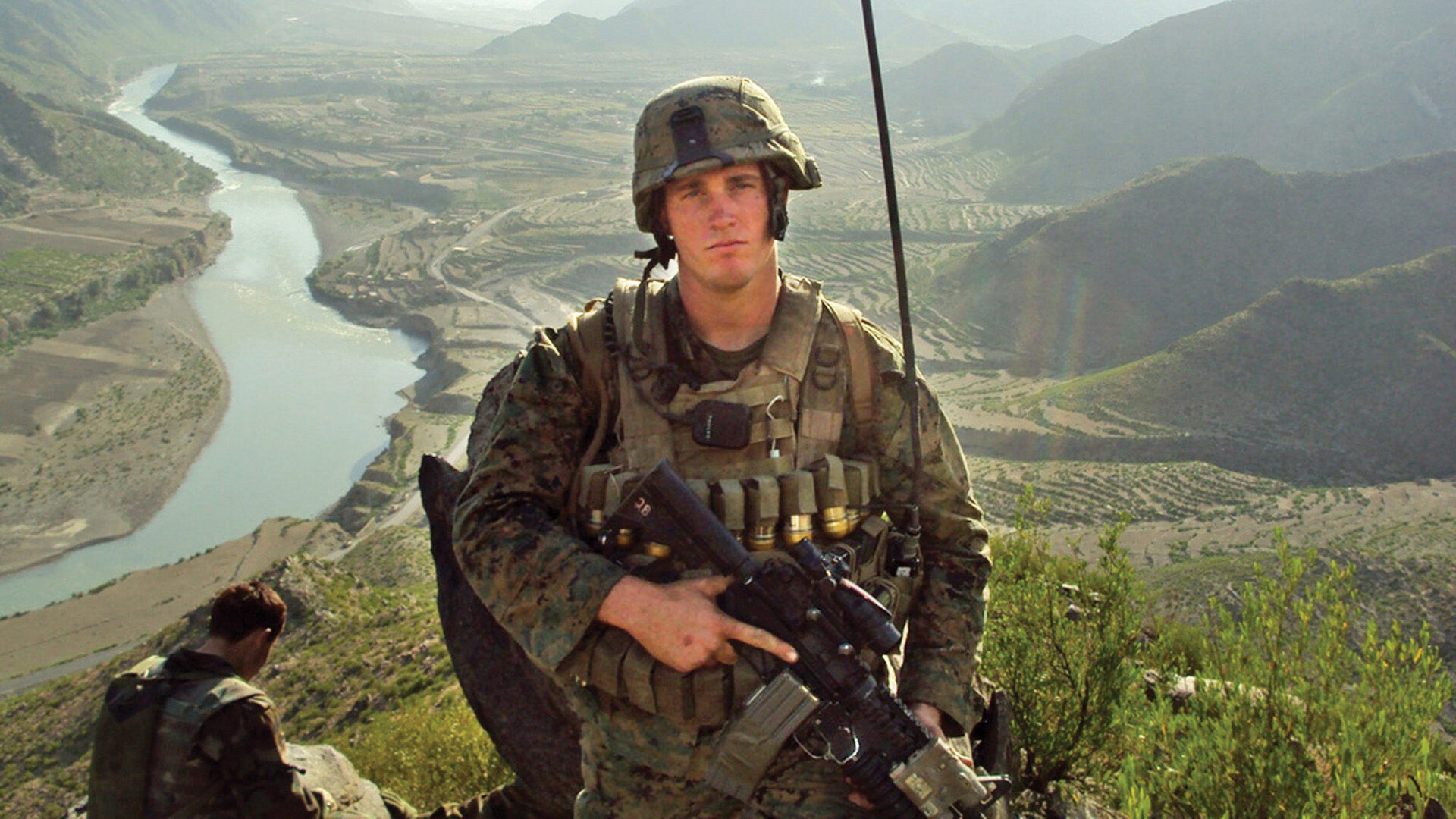
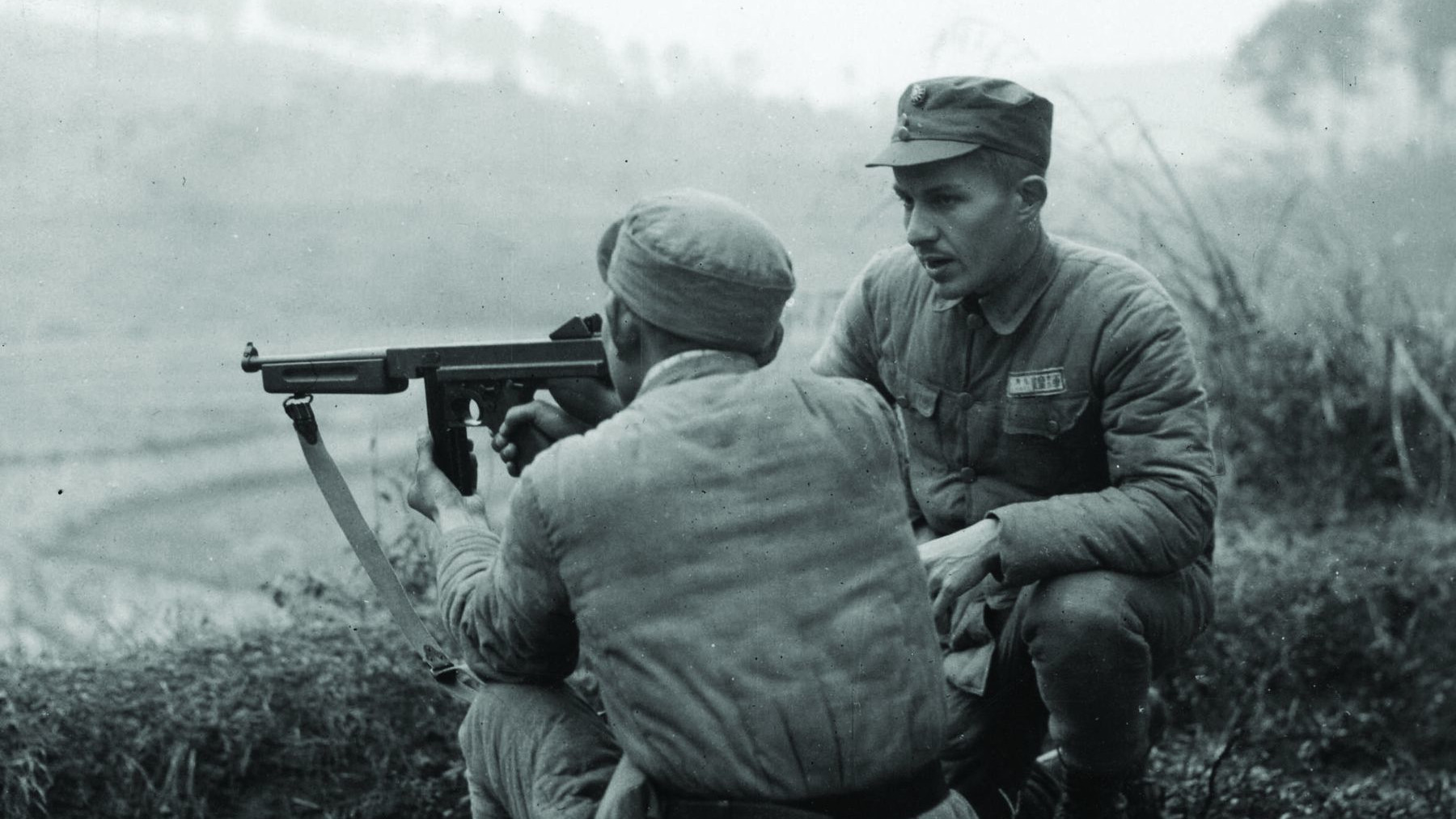

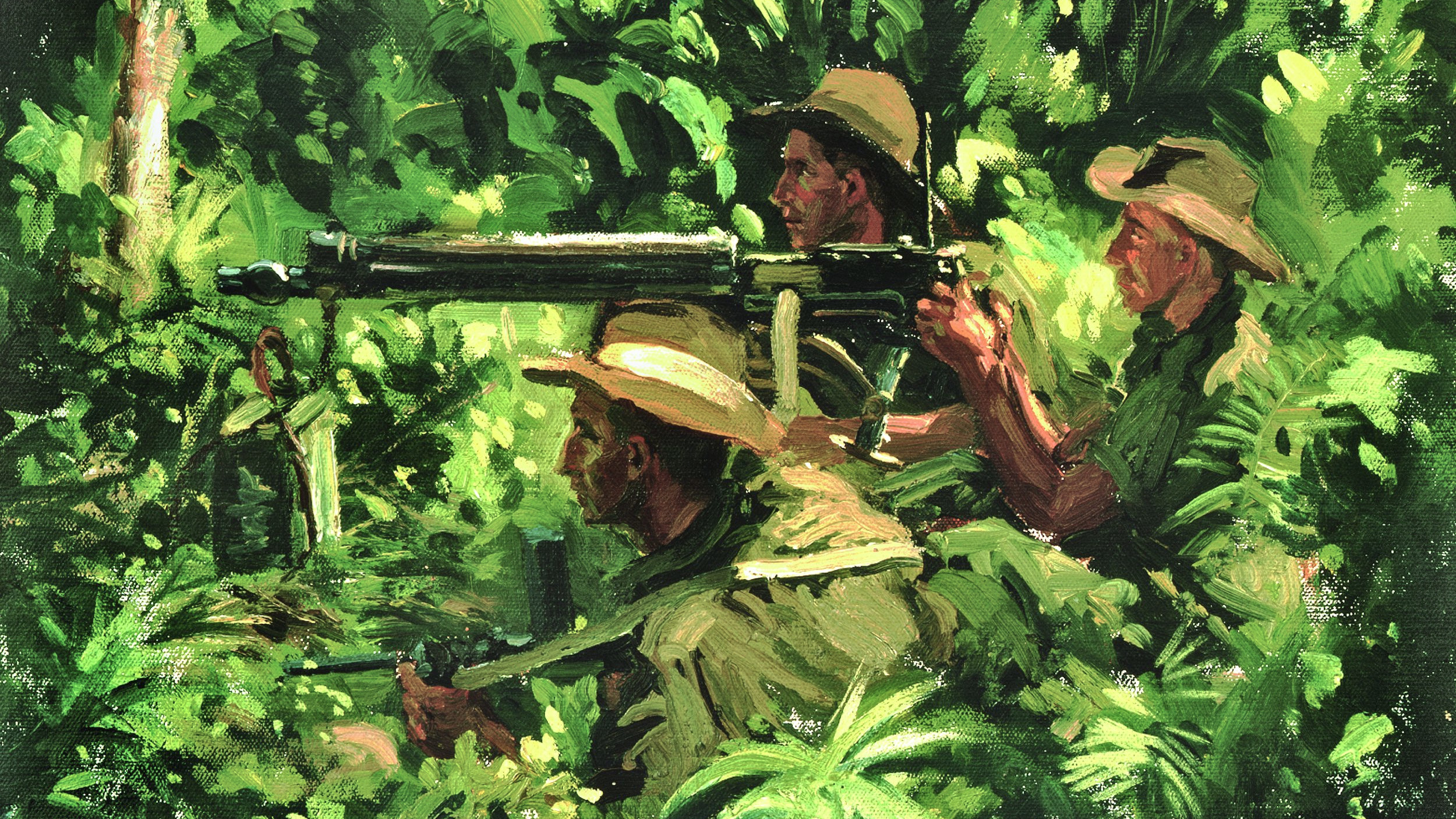
A lot of good detail and easy to read. However, the summary only gives allied casualties but no German casualty figures or prisoners. You conclude that it was a decisive failure, whereas I would argue that it was mainly successful. Far from prolonging the war, it drew in the German reserves which enabled Patton’s thrust to be even more successful.
David, are you referring to my article on the Nijmegen Bridge crossing?
My answer is: I had immense difficulty finding the German casualty figures for the Waal River crossing, and never actually found the numbers. I wanted to focus on things that get less notice from the average history buff, which are
1. The success of the assault through courage and good planning.
2. The role of the 504th Parachute Infantry and the Grenadier Guards in the attack from the south side of the bridge.
3. How well British and American troops worked together in the tactical situation, despite differing methods and lack of experience at doing so beforehand.
The average American history buff draws his knowledge of World War II in Europe (ironically enough) from repeated viewings of the movie “Patton” and books and magazines that denigrate the British war effort to the point that the British are depicted as either comedians or incompetents or both.
Incidentally, when “Patton” premiered in the United Kingdom in 1970, Eighth Army veterans from Field Marshal Francis de Guingand down to ordinary Squaddies were outraged by the scene where a triumphant Field Marshal Montgomery arrives in Messina in Sicily, thinking he’s won the “great race,” only to find Gen. George Patton waiting for him. That never happened. Monty had already pulled most of the Eighth Army out of the drive on Messina to prepare for Operation Baytown, crossing the Straits of Messina. The race only existed in Patton’s mind, and in the end, it was between his 7th Army and the British 4th Armoured Brigade and a battalion of Army Commandos, under Brig. John Currie, who was seeking his own triumph.
Another Hollywood horror for the British was “U-571,” in which heroic US Sailors capture a German U-boat of the same number. In actuality, the boat was “U-570,” and it was a British operation from start to finish.
I once wrote an essay for Avalanche Press’s web page about how some day Hollywood will take over the “Bismarck” chase for a re-make. However, in the new movie, the British will barely appear, except as either stupid cowards, timorous mice, or complete traitors. The German battleship crew will include a smokin’ hot female scuba instructor of Jewish descent, who will be concealing her family on the ship in an effort to flee Hitler. She in turn will be the object of love of an ordinary seaman and a high-ranking officer. The Americans will sink the “Bismarck” either with missile-armed F-18s or TIE Fighters, killing the high-ranking officer, but the ordinary seaman will sacrifice his life to save the scuba instructor and her family.
Critics will hail the movie for its special effects and dramatic acting. American politicians will laud it as a “stirring tribute to our great veterans.” Actual veterans of the “Bismarck” has won’t have an opportunity to complain, because most of them are dead.
Wow, you can see some bitterness in these comments. As a Mexican who grew up primarily on American television shows, I believed to a certain point in my life that Americans had fought and won World War II on their own. Only until my adulthood and after reading various books, several of which were written by British historians, did I understand a little better the role of each allied country in the fight against the axis and their satellite countries. The role of no country in defeating the Nazi tyranny should be minimized, the graves of the soldiers of different nationalities who gave their lives for freedom are there to remind us of their sacrifice.
The British Battle of Caen in Normandy says all you need to know about efficiency. British Soldiers are very very good soldiers but England had to have also a Prima Dona to be put under the light of the projectors.
Whereas Patton was not? Clarke? No, of course not. Many generals are egotistical – let’s not just single out Monty! He had his faults (as did many) but he could also be a brilliant general, as could Patton and Clarke. Caen is a very long story, but buy me a beer and I’ll go through it with you, if you like.
Nice article. I would like to make one comment on the 325th GIR who were held up in England because of bad weather. Where you state,
At the time of the river crossing, paratroopers of the other battalions of the 505th had a hard fight at Mook. General Gavin left the power station at Nijmegen, mounted his jeep, and raced to Mook, where he personally took command of the 505th’s defense.
Did you know that Gavin put the Glider Pilots on the line with the 505th? Glider pilots were supposed to be evacuated as soon as possible and were usually to be given duties that did not allow them to be killed or wounded. Of course this didn’t always happen and in most cases they fought along side the unit they took in until the area was secured. With Gavin needing to take a bridge and his 325th not materializing he was desperate for reinforcement of the 505th. He ordered all glider pilots to be put on the line in foxholes with the 505th. Many were waiting evacuation at the location they were given, a hunting lodge at Jachslot Mookerheide, waiting to be evacuated. Major, then Capt Andross, Glider Officer, wrote in is report, “On the night that the enemy broke through at Mook we (the 313th with 73 men and the 61st with 25 men; to be our reserve) were pulled into the front lines. Here we stayed for 3 nights and 2 days in line with the 505 Parargt (? handwritten). We were relieved by members of their groups on the 3rd day.” There were 300 Glider pilots put on the line with the 505th with 100 in reserve behind the line. For further reading you may want to read the following: Fred Lunde’s My nine days of combat The glider pilots are almost always over looked or historians believe they were part of the airborne unit like the British system. They were not airborne but were glider pilots of the Army Air Force, under Troop Carrier. They did have some infantry training but their job was to take a 7,500 glider with a glide rate of 12/1 (like flying a brick) through flak, small arms fire, mortars, and machine gun fire and land safely without damage to their load. They were to dodge electric lines, and all obstacles in the landing zone including the Rommel Asparagus and land within a few feet before hitting hedgerows like cement walls. Then help unload, most of the time under fire, at which point they were on detached service to the unit they just brought in. They had to fight just as the airborne did in a hot landing zone but without the equipment or weapons the airborne had. In a perfect world it could have worked to just have them land and catch a ride back to their base which is basically the thought by the planners. Unfortunately, the enemy did not understand the plan. It is easy to see how they so often get over looked. All of them wanted to fight and were proud to be on the line with the 505th. It wasn’t until the last operation, the invasion of Germany that they were given defensive positions with the 17th Airborne and assigned specific infantry actions.Thank you so much for this article. Kind regards, Patricia Overman, NWCNational WWII Glider Pilots CommitteeSilent Wings Museum Foundation
To reply specifically to your mention of the Bismark, had not an American officer in a PBY broadcast the location of the Bismark to the world but especially to the befuddled British Navy which had no clue as to the battleship’s location–was it off Cape Town, Buenos Aires or New York, not clue. An act mind you in violation of the rules of war AND America’s current neutrality law. Sans this blatent violation, there would be no shipwreck to exp0losre and there would have been a gigantic shortage of paper bags in British grocery stores as they would have been requisitioned for ALL naval personnel to hide their faces from the British public. You know, the shame, the shame, the shame.
Well, yes – sort of. As ever, there’s rather more to it than ‘American pilot saves the day’. The fact is that RN ships – specifically Prince of Wales and the cruisers Norfolk and Suffolk – were in contact with the German ships (Bismarck and Prinz Eugen) after the Battle of the Denmark Strait. Later, after the Germans had broken contact with their pursuers, Bismarck’s captain broke radio slience which allowed the British to triangulate his position and deduce that the Bismarck (damaged in previous encounters) was heading for France. The PBY – actually an RAF Catalina of 209 Sqn – which detected Bismarck was, indeed, co-piloted by an American pilot, secretly on loan. Note that Ensign Leonard B Smith was the co-pilot, not the pilot – but it’s a team effort on these aircraft and we’re not splitting hairs (or are we?) Smith was at the controls when Bismarck was detected, by virtue of the trail of oil she was dragging behnd her, but he most certainly did not ‘broadcast the location of the Bismark [sic] to the world’ – he informed the Admiralty. Two Swordfishes from HMS Ark Royal also located the Bismarck 30 minutes after Smith and his Catalina. The rest, as they say, is history. However, to claim that ‘the befuddled British Navy […] had no clue as to the battleship’s location–was it off Cape Town, Buenos Aires or New York’ (those locations used, I presume, for comic effect) is to be careless of the facts, to say the least! And we should always try to follow the history.
The Nijmegen Bridge was certainly not in the hands of the 504th PIR when the first 4 Grenadier Guards tanks rolled across the bridge at the northern end at 6.30pm, this is one of those incredibly annoying fictional embellishments, infact they were around half a mile away despite their incredibly heroic efforts. This is fact. Proven by U.S. 82nd Divisional records and Grenadier Guards War Office diaries.